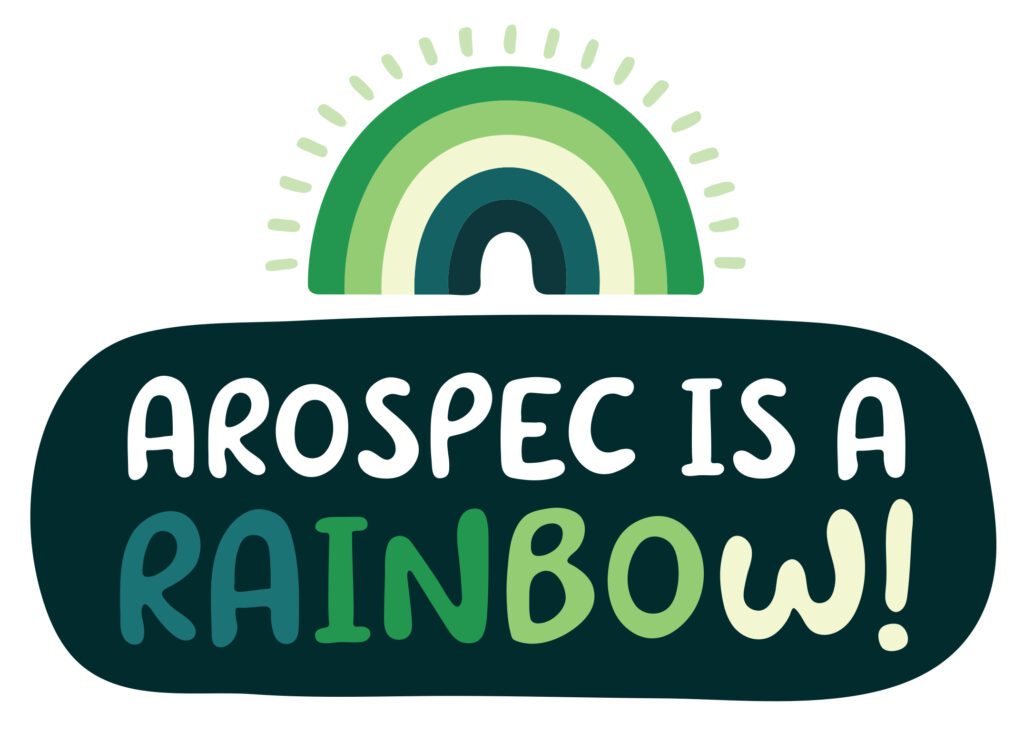Blog Post
Aro; To the Point


By Victoria Barron
Sexual orientations have two defining aspects: who sexual attraction is experienced towards (e.g. bisexual), and how
that attraction is experienced (e.g. asexual). Romantic orientations are, likewise, defined by the who (e.g. biromantic) and how (e.g. aromantic)—only this is applied to romantic attraction.
The aromantic spectrum falls under the umbrella of romantic orientations, and when it comes to representation there can be a tendency if it of being sidelined in favor of its slightly better-known sibling, asexuality (in itself an often misunderstood and underrepresented spectrum). While romantic and sexual attraction can seem solidly intertwined, through the Split Attraction Model (SAM) we can begin to view sexual attraction and romantic attraction not as one joint experience, but as two individual experiences. They are linked…yet distinctly separate. To differentiate one, it helps to understand them both.
The idea of ‘romance’ and ‘romantic love’ is a social construct centuries old, linked to medieval ideas of chivalry. It’s also one of the trickier experiences to define because it heavily relies on a personal and contemporary interpretation/sense of this construct. ‘Love’ (feelings of attachment, intimacy, protectiveness, commitment etc.), however, is a much broader term covering a variety of forms (romance included).
But what exactly is romantic attraction?
Is it having a ‘crush’? Not always. The experience of having a crush can also be platonic or alterous, as well as romantic.
Is it wanting an long-lasting emotional connection? It’s part of romantic attraction, but desiring a long-term emotional bond with another person is also the foundation of many forms of love (e.g. platonic, alterous, familial, parental).
Is it taking part in typically romantic relationships, activities, or bonding behaviours? No, because these are actions, and therefore choices.
Is it having an innate desire to have a long-term relationship that engages in typically romantic activities/bonding behaviours? Yes, this can be one way to (broadly) define romantic attraction.
Any person who doesn’t experience romantic attraction in a complete, definable, or consistent way; anyone who finds their experience ambiguous, changeable, or circumstantial may fall on the aromantic spectrum.
I personally use the labels queer/aroace, within which resides my often fluctuating arospec identity. I’ve had crushes (of a sort), and enjoy the idea of romance (in thoughts, in fiction, for other people), though, in real life, I don’t personally connect with it in the way society insists/expects.
But, I do love. I love many people, greatly…just in ways other than romantic. Platonic love, emotional connection, and companionship holds great importance to me, and while romantic love/attraction doesn’t personally resonate with me, ‘alterous’ love/attraction (to some extent) does; something broad with blurring edges between platonic and romantic; something both, and neither, at the same time.

The aromantic spectrum is vast, and in a world that pushes a very specific idea of romantic feelings, actions, and partnerships, having positive representation and awareness of alternative experiences (like within the array of arospec orientations) can help affirm the magic, equality, and value of all forms of love.
One of my favorite explorations of attraction and relationships can be found in Alice Oseman’s book, Loveless. It explores acespec and aropec orientations; the pressure of following conformity; the deeply ingrained awareness that sexual and romantic attraction feels as though it should be something each person connects with.
At one point a character declares their platonic love and commitment for another, asking to be their ‘special person’ in life. It’s just as beautiful and significant as any romantic declaration. And, I think that’s the point. Arospec people are not inevitably ‘loveless’, because ‘love’ is not only about romantic attraction/relationships.
Aro or not, we all deserve to see more representation of the many diverse and meaningful ways/types of love and attraction that can be experienced, because in so many of its forms love can be, well… lovely!
Terminology:
Alterous: a type of attraction residing nebulously between ‘platonic’ and ‘romantic’.
Aroace: a sexual and romantic orientation in which the individual experiences little to no romantic attraction and little to sexual attraction.
Aro: describes an arospec person (e.g. ‘I’m aro’, or ‘They are aro’).
Aromantic: an orientation that specifically experiences no romantic attraction, regardless of gender.
Aromantic spectrum: any/all orientations that experience little to no romantic attraction.
Arospec: shortened term for ‘aromantic spectrum’.
Attraction: an innate feeling—not chosen.
– Victoria Barron (she/her) is an illustrator and author with two LGBTQ+ education books (published in 2023): Perfectly Queer, and Amazing Ace, Awesome Aro. For more, visit: www.victoriabarron.com